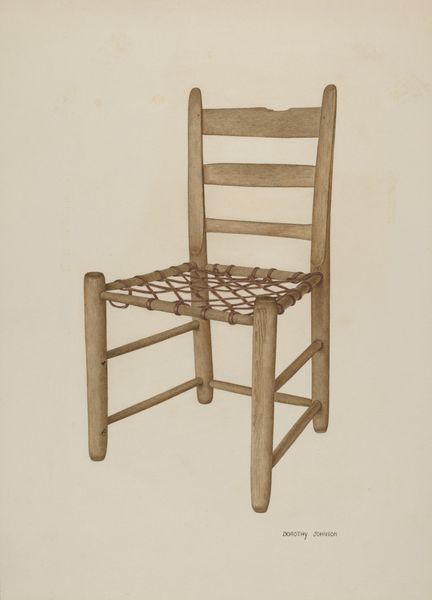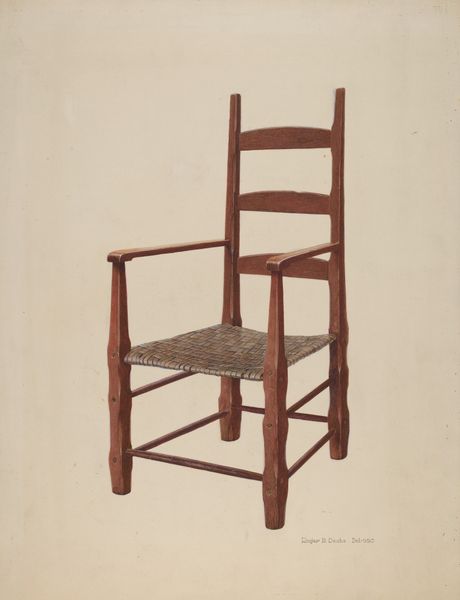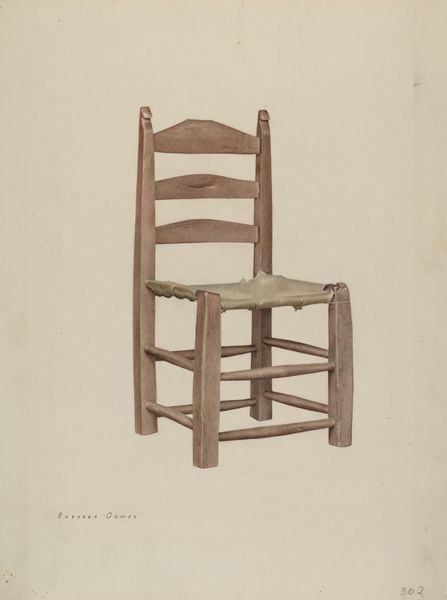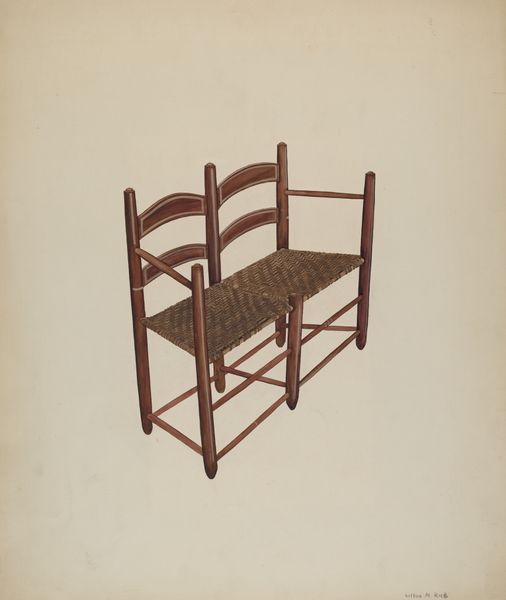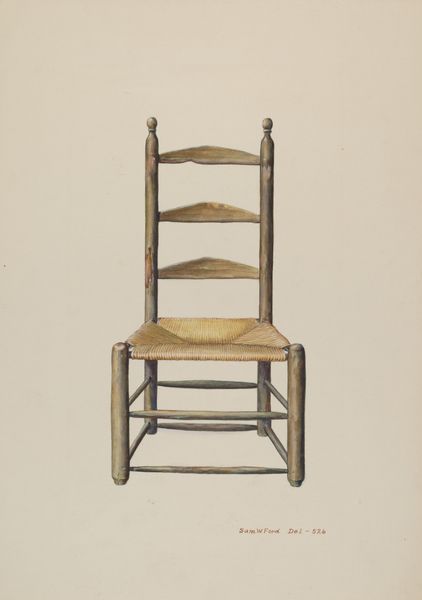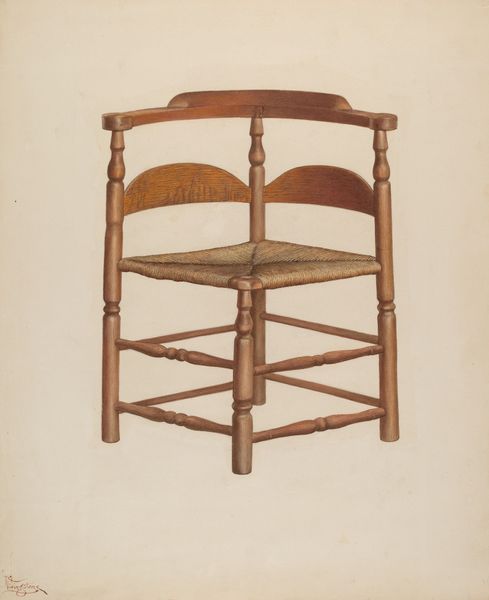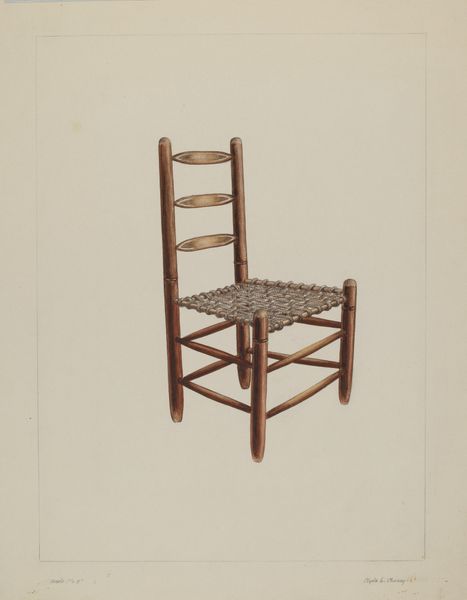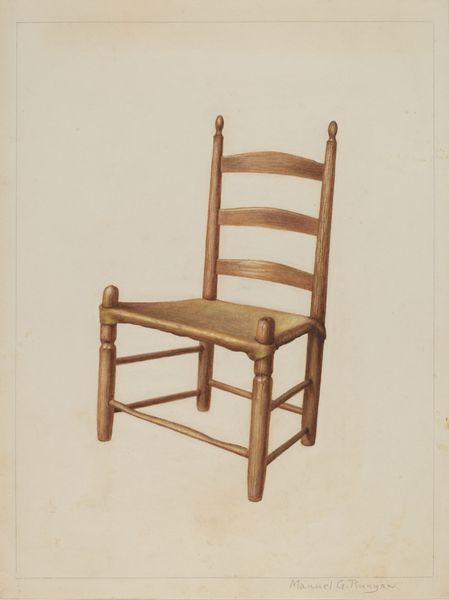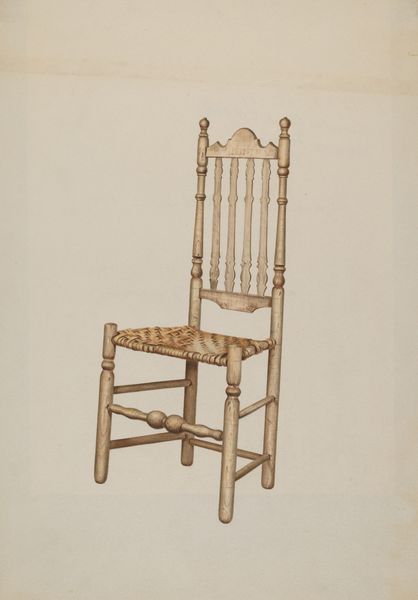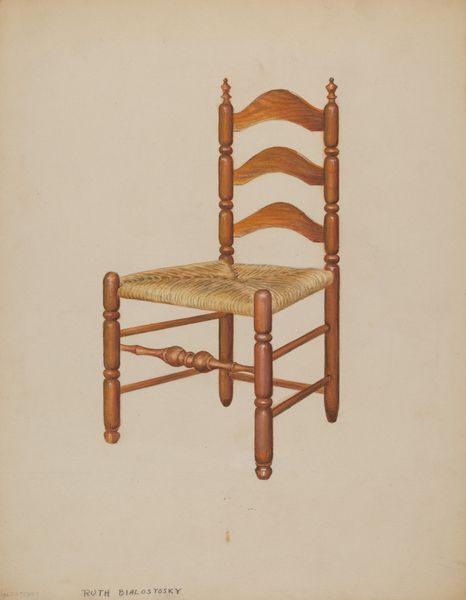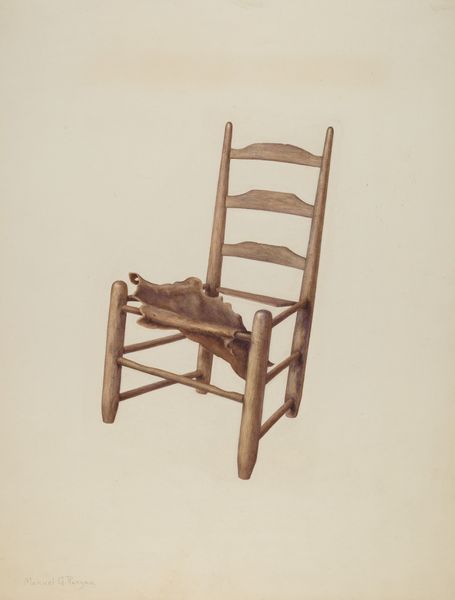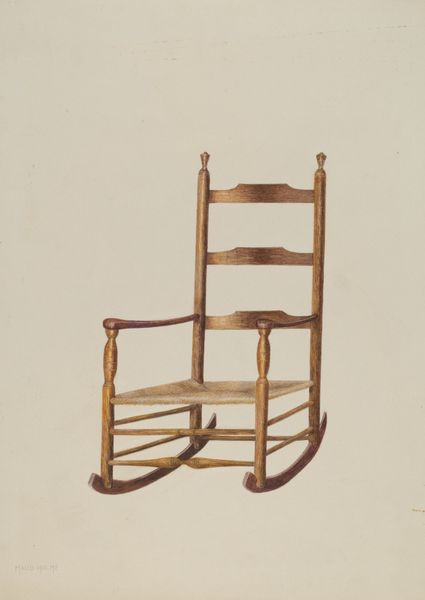
drawing, watercolor, pencil
#
portrait
#
drawing
#
charcoal drawing
#
watercolor
#
pencil drawing
#
pencil
#
watercolour illustration
Dimensions: overall: 35.1 x 24.6 cm (13 13/16 x 9 11/16 in.) Original IAD Object: 33"high; 17"wide; 17 1/2"deep
Copyright: National Gallery of Art: CC0 1.0
Curator: Right now, we're looking at Dorothy Johnson's "Double Back Chair" from around 1939, a piece rendered in pencil and watercolor. It strikes me, initially, as an exploration of quiet, utilitarian beauty. Editor: There’s something melancholy about it. The muted tones and stark composition almost isolate the chair, stripping away any sense of comfort. More like a ghost of a chair, a memory... Curator: It’s fascinating how the humble materials contribute to this feeling. We’re talking about graphite, pigments, and paper. Consider the socio-economic context – everyday objects rendered through accessible mediums reflect artistic concerns and priorities. What was valued, what was worthy of documentation. Editor: I suppose the humbleness attracts me... like the feeling of my grandmother's cottage or a back porch in late summer. It brings a familiarity of a quiet moment, the scent of wood and straw in warm air...it even lets you project forward to the warmth that has touched every groove and cranny...it is very quiet but I bet it whispers tales if you just sit long enough and think with it. Curator: Absolutely. It reminds us that the creation, distribution and interpretation of art is rooted in material realities. Each mark on the paper reflects decisions – access, resources, available tools – shaping the finished artwork and our interaction with it. You imagine the process itself, the movement of the artist’s hand... Editor: Right, like... was the chair real? Did she see it and then make something new or was she remaking one she has know for a while...or...am I over thinking it because the lines feel real, the light as the straw tells the time. So it had to have been felt somehow and translated and you end up sharing that translation through just looking. That makes a chair much more important. Curator: Precisely. Viewing “Double Back Chair” beyond a static image allows appreciation of the hands that formed and drew it, and its relevance to debates surrounding utility and design in the context of the era's evolving definitions of what defined art versus commodity. Editor: Looking again it feels the more special now... It brings a story I want to share just by me witnessing a rendition in graphite and wash. Curator: Exactly, that simple form can have so many echoes, even if, ultimately, it depicts a singular chair.
Comments
No comments
Be the first to comment and join the conversation on the ultimate creative platform.
